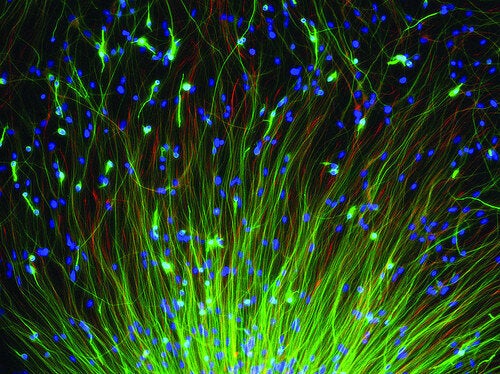
Ever wish you could turn off your anxiety? A recent study from Stanford located a part of the brain that could function like an on/off switch.
Researchers found a certain brain circuit that when stimulated in mice proved to inhibit their anxiety -- the mice were emboldened to freely explore open areas they typically shunned out of fear of predator attacks.
The March 9 study was published by the online science and medical journal, Nature.
The Stanford School of Medicine News reports:
The mice's willingness to explore the open areas increased profoundly as soon as light was pulsed into the novel brain circuit. Pulsing that same circuit with a different, inhibitory frequency of light produced the opposite result: the mice instantly became more anxious.
The anxiety-reducing brain circuit is located -- counterintuitively -- in a part of the brain that is typically associated with fear, which may explain why scientists have overlooked it before.
Neuroscientist and Stanford psychiatry professor Karl Deisseroth created a new technique that allowed him and his colleagues to focus on a singular circuit within that brain structure. By adding photosensitive proteins from algae and bacteria onto certain nerve cells, Deisseroth was able to activate or suppress those cells by shining different wavelengths of light onto them. This allowed him and his team greater selectivity than in the past, when brain areas were activated using electrodes, which increase nerve cell activity in the entire region.
So what does it mean for humans?
Nearly 20 percent of Americans are affected by anxiety every year, according to The National Institute of Health, but only about one third ever receive treatment for it. Feelings of anxiety are factors in many serious psychiatric disorders, and symptoms can worsen if left untreated.
Though it remains to be seen whether this new technique, known as optogenetics, will be able to shed more light on anxiety disorders and the possibilities of controlling them, many hope the discovery will lead to new anti-anxiety treatments.
Experimenting with mice has long helped neuroscientists gain a deeper understanding of the human brain. The area of focus in mice brains, known as the amygdala, has a similar structure to the amygdala in the human brain. A separate study on anxiety disorder, completed last year by Stanford's Amit Etkin, M.D., Ph.D., shows further similarities between the amygdala in mice and the amygdala in humans.
For more information, read the full paper online in Nature.
